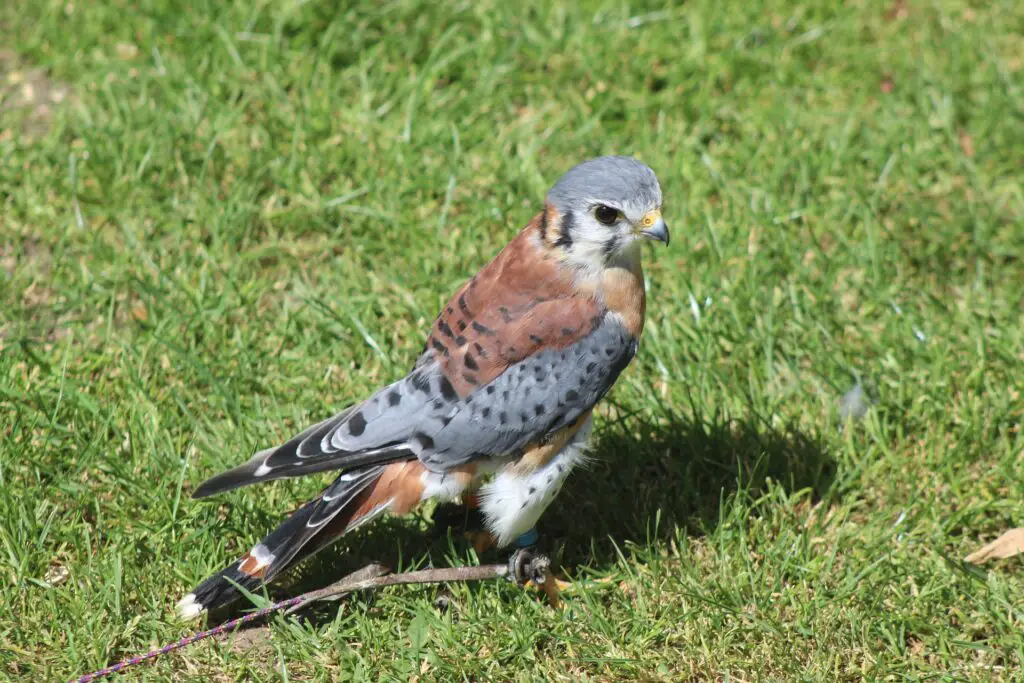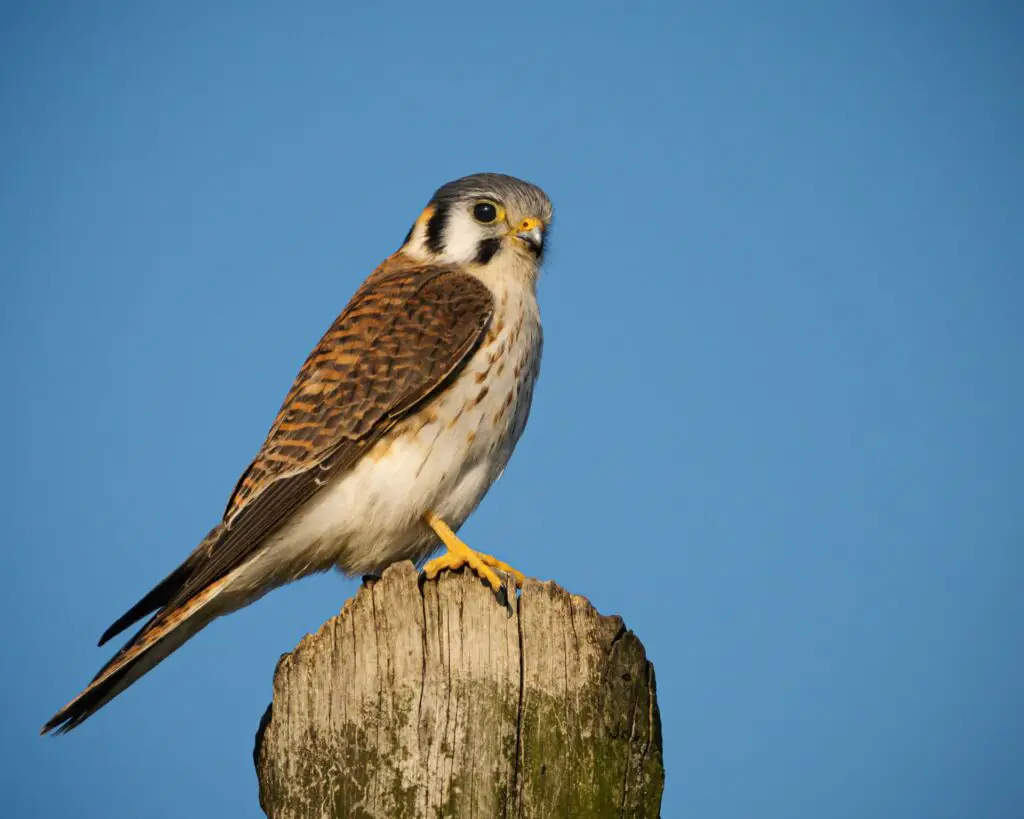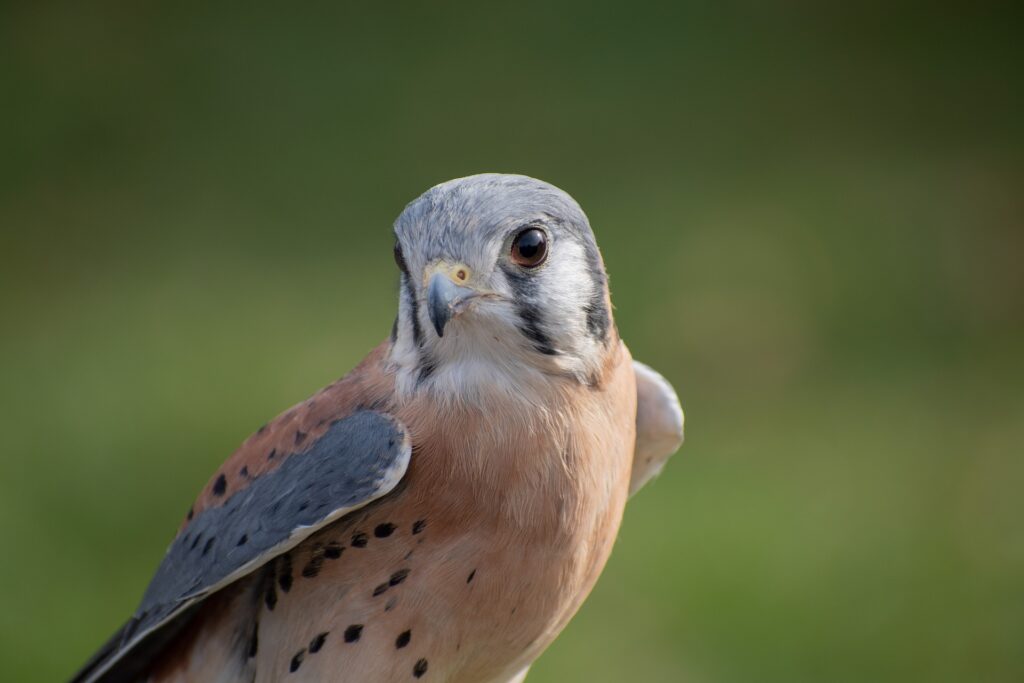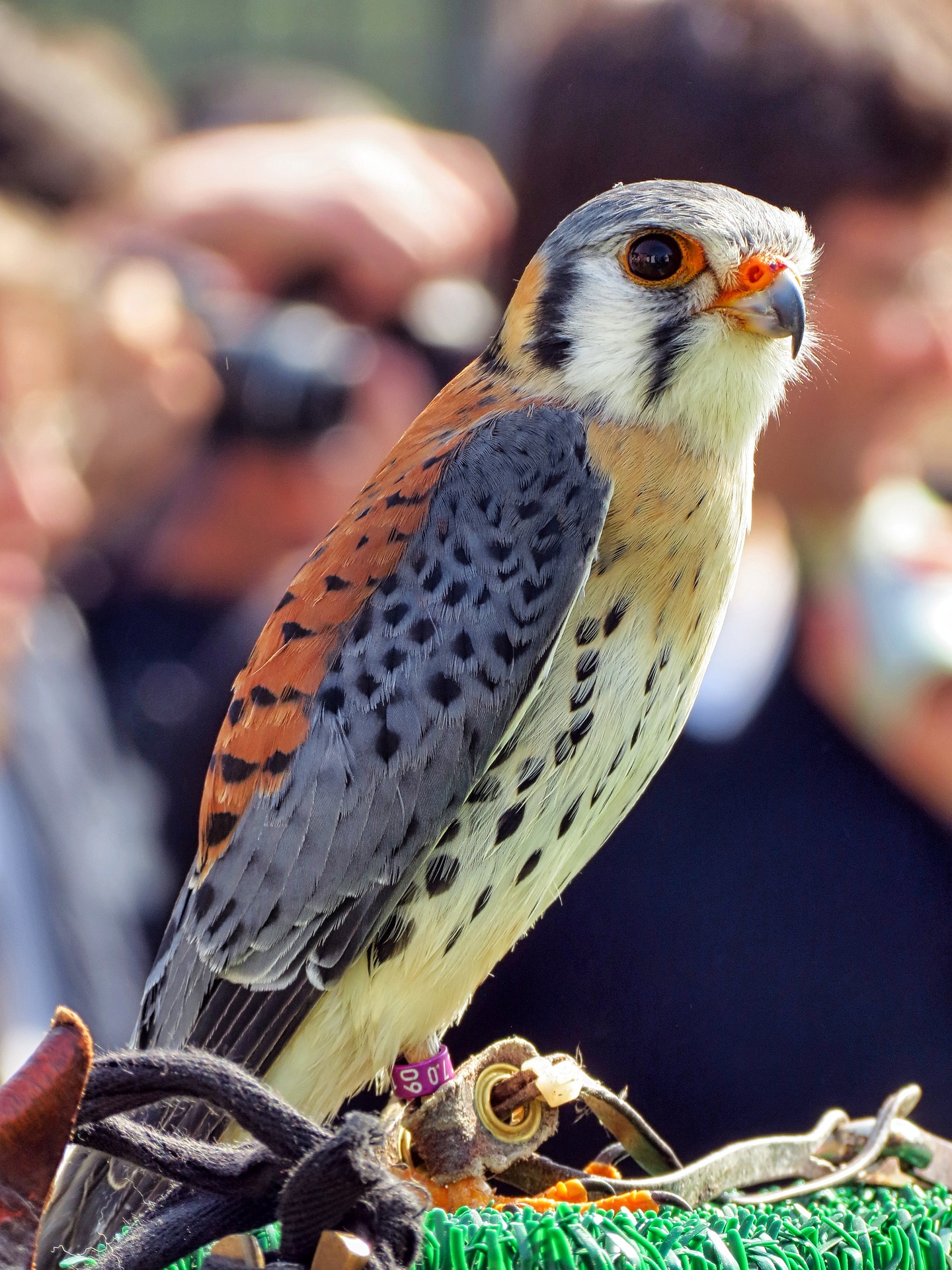Kestrels are small raptor that is found in many parts of the world. They have traditionally been used for falconry, although there is some debate over whether they are good for this purpose. Kestrels are relatively easy to train and can successfully hunt small prey. However, they may not be as effective on the larger games and may be less hardy than other raptors.
Yes, Kestrels are good for falconry. First and most important, they are very easy to train. Secondly, they have a high success rate in hunting. Third, they are relatively low maintenance when it comes to caring and feeding. And fourth, they are relatively inexpensive to purchase.
All of these factors combine to make Kestrels an excellent choice for those interested in falconry. When it comes to kestrels, you might want to think about adding a kestrel to your falconry arsenal if you are interested in learning more about kestrels. Read on for more information!

How did Kestrels become popular for use in falconry?
For centuries, falconry has been a popular sport among the nobility, and kestrels have long been prized for their hunting abilities. Traditionally, kestrels were captured in the wild and then trained to hunt with human assistance. However, humans began to domesticate kestrels over time, raising them in captivity and teaching them to hunt on command. This practice became increasingly common during the medieval period, as kestrels were introduced to new areas of Europe through trade and travel. By the 1500s, kestrels had become one of the most popular birds of prey among European falconers. Today, kestrels are still widely used in falconry, and their popularity remains as high as ever. Thanks to their keen eyesight and hunting prowess, kestrels continue to be prized by falconers all over the world.
What are the Kestrel’s essential traits that make them successful predators?
The Kestrel is a small but mighty bird of prey. Though they are not the largest raptors, they more than makeup for it in skill and athleticism. Kestrels have long, pointed wings that allow them to manoeuvre quickly and accurately in the air. They also have keen eyesight, which helps them to spot potential prey from a distance. When hunting, kestrels will often hover in the air, scanning the ground below for movement. This gives them a unique advantage over other predators, as they can strike quickly and without warning. Kestrels are also relatively adaptable birds capable of surviving in a variety of habitats around the world. Whether hunting in open fields or dense forests, these formidable predators do not stop looking for food even if they are found in open fields or dense forests, regardless of where they are found.
What are the pros and cons of using Kestrels for falconry?
Falconry is the use of trained birds of prey for the purpose of hunting small game. For centuries, falconers have used a variety of birds for this purpose, including eagles, hawks, and owls. However, in recent years, kestrels have become increasingly popular due to their small size and relatively calm temperament. While kestrels have several advantages as hunting partners, they also have certain disadvantages, which should be considered before deciding to commit to training one.

One of the main advantages of kestrels is their size. At only about 10 inches in length, they are much smaller than other birds of prey, making them easier to handle. They are also relatively calm birds, making them less likely to injure their human handler during training or hunting. However, kestrels do have some drawbacks as well. One of the biggest is that they are not as powerful as other raptors, so they may not be able to take down larger prey. Additionally, because they are smaller birds, they require more frequent meals than larger raptors, which can make them more expensive to keep. Kestrels make excellent hunting partners, but after experiencing their performance, several factors must be considered before committing to train one, so it is important to consider everything carefully.
How to train a Kestrels for falconry?
Kestrels are a type of small hawk that is often used in falconry, a sport where trained birds of prey are used to hunt small game. Kestrels are particularly well-suited to this purpose, as they have excellent eyesight and can manoeuvre quickly to catch their prey. While kestrels can be wild-caught, they are generally recommended to be captive-bred, as this gives the falconer more control over their diet and health. In addition, kestrels that are bred in captivity are less likely to imprint on humans, making them easier to train.
To begin training a kestrel for falconry, it is first essential to gain the bird’s trust. This can be done by offering it food from your hand and spending time around it each day. Once the Kestrel is comfortable with you, you can start to introduce it to hunting equipment such as gloves, hoods, and jesses (leather straps used to attach the bird to your arm). The next step is to begin teaching the basic kestrel commands such as “come,” “stay,” and “here.” These commands will be used during the hunting process to help direct the bird’s actions. Finally, the Kestrel must be acclimated to being outdoors and allowed to hunt with an experienced falconer before being released on its own. With patience and practice, most kestrels can be successfully trained for falconry.
What are the benefits of using Kestrels for falconry?
There has been a tradition of falconry practised for centuries. Today, it is still a popular hobby among bird enthusiasts. It is widely known that the most popular falconry bird is the Kestrel. Kestrels are small but powerful birds of prey. They are equipped with sharp talons and beaks that allow them to easily take down their prey. In addition, kestrels are very well-suited for spotting prey at great distances. This makes them ideal for falconry purposes.
There are many benefits to using kestrels for falconry:
- They are relatively easy to train. With proper care and guidance, kestrels can quickly learn to hunt on command.
- Kestrels are relatively small birds, which makes them easy to handle.
- Kestrels are extremely versatile hunters and can be used to take down a variety of different prey animals.
Whether you’re a seasoned falconer or just getting started, kestrels make an excellent choice for your bird of prey.

Are Kestrels a good start-up bird for falconry?
The answer to this question is somewhat subjective. While kestrels are good hunting partners, they have some drawbacks that should be considered before committing to training one:
- They are not as powerful as other raptors, so they may not be able to take down larger prey.
- Because they are smaller birds, they require more frequent meals than larger raptors, which can make them more expensive to keep.
- Kestrels must be acclimated to being outdoors and allowed to hunt with an experienced falconer before being released on their own.
With patience and practice, most kestrels can be successfully trained for falconry.
Things to consider when buying a Kestrels for falconry
Kestrels make excellent falconry birds, but before purchasing one, you should consider a few things. The first is the age of the bird. Young Kestrels are typically more flighty and difficult to train than older birds. If you’re starting out in falconry, choosing an older bird with some hunting experience is best. The second thing to consider is the gender of the bird. Male Kestrels are typically larger and have more powerful talons than females. However, they are also more likely to be aggressive and difficult to handle. If you’re not experienced in working with large birds, it’s probably best to choose a female Kestrel. Lastly, you need to think about what you want to use your Kestrel for. If you’re primarily interested in hunting small game, then you’ll want to choose a bird with good eyesight and agile flight. Alternatively, a heavier bird with powerful talons is probably a better choice when looking for one that is able to take down larger prey. No matter what your priorities are, taking the time to choose the right Kestrel will help ensure that you have a successful falconry experience.
Are there any good places to buy Kestrels?
Yes, there are a few good places to buy Kestrels. One of the best is from reputable Breeders. These dealers offer a wide variety of Kestrels for sale, as well as a variety of other birds of prey. They also offer a wide range of training and acclimation services to help you get started with falconry. In addition, many local raptor sanctuaries also offer Kestrels for sale. You may want to support a local sanctuary or hand-raise your own bird. However, remember that these sanctuaries typically don’t offer the same training and support as online dealers. In order to ensure that you are making the right purchase, you need to do some research beforehand.
Yes, there are several good places where you can buy Kestrels for falconry purposes:
1) online from reputable
2) from local raptor sanctuaries
3) by hand-raising them yourself from eggs obtained through captive breeding programs
Are there any costs associated with falconry with Kestrels?
Like any hobby, falconry comes with its own set of associated costs. If you’re interested in taking up this ancient sport, be prepared to invest in some initial equipment and ongoing costs for food and housing for your Kestrel. In terms of equipment, you’ll need to purchase a proper hood, gloves, jesses and leashes, perches and a transport box – which can set you back a few hundred dollars. Once you’ve sorted your gear, you’ll need to consider the ongoing costs of caring for your Kestrel. These birds require a diet of fresh meat, so you’ll need to factor in the cost of buying (or catching) live prey. You’ll also need to provide suitable housing for your bird – either an outdoor aviary or an indoor cage. While the initial investment for falconry may be significant, many people find that financial and personal rewards more than justify the cost.

What are the laws regarding owning Kestrels in the United States?
In the United States, there are laws in place that regulate the ownership of certain types of animals, including kestrels. These laws are designed to protect the animals’ welfare and ensure that they are not being mistreated. Anyone who is considering owning a kestrel should be familiar with these laws before making a purchase.
The Migratory Bird Treaty Act is the first law pertaining to kestrel ownership. This law makes it illegal to own or sell any migratory bird without a permit. This includes kestrels, as they are considered a migratory species. The only way to obtain a permit to own a kestrel is if you can prove that the bird will be used for educational or scientific purposes.
Another law that applies to kestrel ownership is the Federal Endangered Species Act. This law makes it illegal to own or sell any animal that is listed as endangered or threatened. Kestrels are not currently listed as either, but they are considered a species of concern. This means that it is possible that they could become endangered in the future, and owners would need to be very careful about how they care for their birds.
Finally, all states have their own laws regarding wildlife ownership. These laws vary from state to state, so it is important to check with your local wildlife agency to determine the specific laws in your area. In general, however, most states require that you have a license or permit in order to legally own a kestrel.
By familiarizing yourself with the laws regarding kestrel ownership, you can help to ensure that you are providing proper care for your bird and not putting it at risk of being confiscated by authorities.

